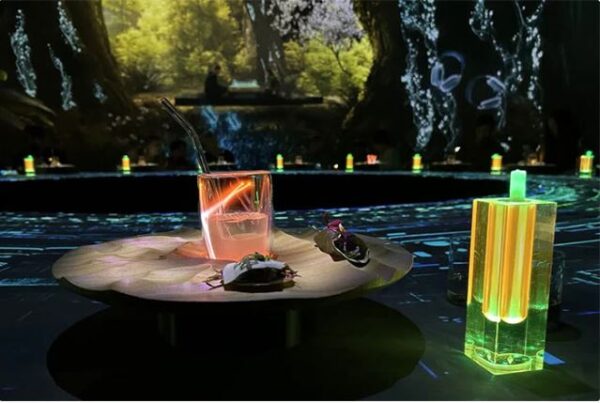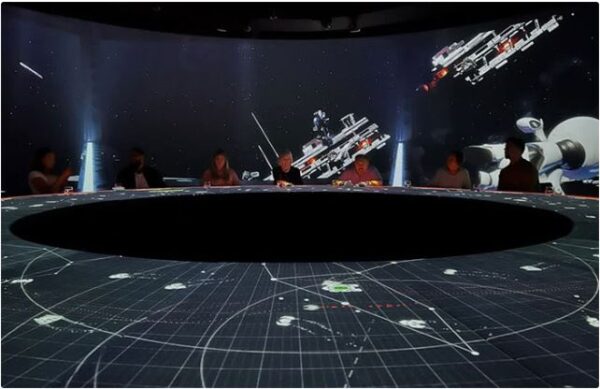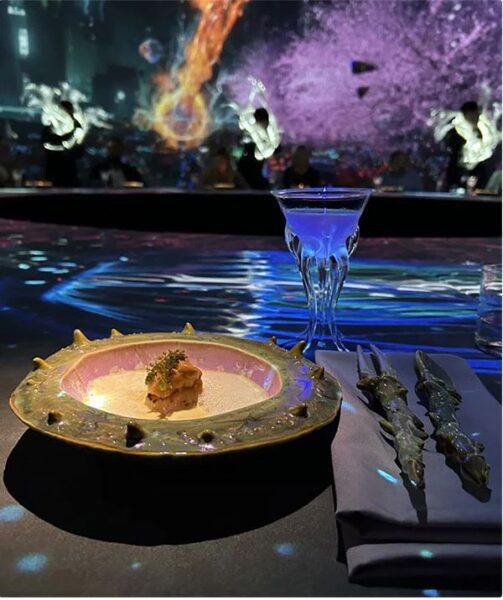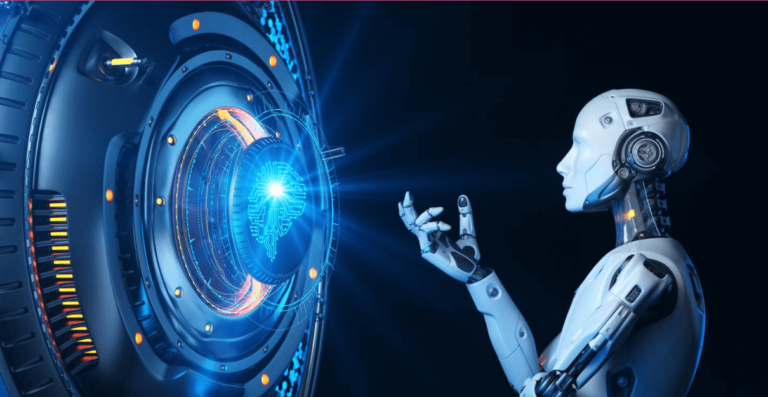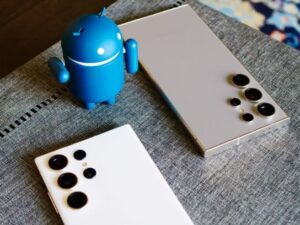Krasota, a fine dining restaurant in Dubai, has brought a new experience to diners.
At the dining table, besides enjoying the food, diners will see recipes presented using artificial intelligence (AI). This is one of eight “Imagined Future” experiences, involving multi-sensory cuisine at Krasota restaurant.
Human spaces blend with the natural world at meals, which include plant-based tacos and all-natural sodas. (Rebecca Cairns/CNN).
Diners will have the opportunity to experience different future scenarios, from an underwater city to a space destination to a post-nuclear apocalypse, with each dish themed to suit the setting.
The co-founders of Krasota restaurant – including digital artist Anton Nenashev, chef Vladimir Mukhin and businessman Boris Zarkov – have created dishes that tap into Artificial Intelligence (AI), bringing diners to the Experience the technology space right at your meal.
Mr. Nenashev designed the projections using 3D computer graphics software. Meanwhile, chef Mukhin has been promoting Midjourney’s creative platform through recipes. Midjourney is an advanced AI image generator that allows users to create unique and impressive images with input text descriptions. With limitless creativity and ease of use, Midjourney is quickly becoming a powerful tool for creatives to bring art to meals.
AI experience meal
Interactive game elements – such as space scenarios, where AI-powered projectors track diners’ hands at the table to potentially “shoot” passing spacecraft. (Photo: Rebecca Cairns/CNN)
Mr. Zarkov, owner of the White Rabbit restaurant in Moscow (where Mukhin is also executive chef and co-founder), visited the teamLabs digital art museum in Tokyo in 2017, which has an interactive public “teahouse.” turmeric.
“The projection on the table is very simple – for example, you drink matcha tea and simulate a plant starting to grow from your cup. From this idea, I decided to do something with technology, focusing on food “, Mr. Zarkov explained.
Bringing together an international team of engineers, the Krasota restaurant co-founding team began working on multi-surface projections and AI-enabled interactive tabletops, using sensors to distinguish between different objects, e.g. like plates and glasses, compared to the visitor’s hand or phone, allowing for targeted projection. Images of fireflies “gathering” on cups and plates or video games activated by diners’ hands.
Mr. Zarkov said this is the most complex and difficult technology we have created. Restaurant Krasota first opened in Moscow in 2021, and recalls staff spent a month training the AI by repeatedly placing plates on the table and moving objects around for inspection.
“At first, it wasn’t very fast – when you moved the phone, it took 3 seconds to react.” But AI uses machine learning to improve as it receives new information. Now you can adjust to any image on the table,” Mr. Zarkov added.
Notably, Krasota Dubai restaurant opened in 2023 with the “Imaginary Art” program, taking diners through 8 special moments, inspired by famous works of many international artists. Six months later, the team kicked off “Imagined Futures” at the dinner table with a tour around the world speculating about the next decade.
Mr. Zarkov said adjusting the program’s pace was difficult. It’s important to have a good balance between screen and food. When you are too focused on the screen, food will no longer taste delicious.
This experience is geared towards the diner’s attention: the most interesting and dynamic visuals are the breaks between dishes but as soon as the food is delivered, the graphics become repetitive and passive to serve. Customers focus on delicious food.
Interactive elements only appear when plates are cleared and in unexpected situations encountered during restaurant meals.
Whether it’s the food or the display, Mr. Zarkov still hopes visitors understand: “art is very important. We want diners to feel that.”
“Sound spice”
Ceramic plates and cutlery custom-made in the style of seashells and crab claws at Krasota restaurant help evoke the underwater dining experience. (Photo: Rebecca Cairns/CNN)
Technology at the dinner table is not an entirely new concept. In 2007, chef Heston Blumenthal’s British restaurant The Fat Duck introduced “sounds of the sea” on its popular sashimi dish – with sound effects that played the gentle lapping of waves on the beach and the cries of seagulls. Europe.
Mr. Charles Spence, Professor of Experimental Psychology at Oxford University, said this is one of the first technology-enabled multi-sensory dishes in the world. He has spent two decades exploring how audiovisual stimulation changes the taste of food – or at least the perception of sound.
For example, classical melodies when enjoying food will make you feel that the food is more valuable and the music is suitable for the cuisine. Italian songs are said to go well with pasta or pizza – which will increase the perception of authenticity.
In one experiment, Mr. Spence also said participants rated the same wine as sweeter by 15% when exposed to a red light effect. And when it is a green light effect, this wine will bring a fresh feeling and a more sour taste feeling.
Even the pitch of music can affect taste, Mr. Spence added: low-pitched sounds will make drinks taste more bitter, while high notes will bring out sweetness.
“More and more chefs want to introduce this sonic seasoning to change the flavor of their dishes. And more and more consumers are eager to explore the surprising connection between different senses while Enjoy the food,” Mr. Spence added.
Technology is becoming more prevalent in multi-sensory experiences. Restaurants like Zenon, also in Dubai, have used “AI-generated art installations” to change the atmosphere of the dining room, making meals more special and artistic.




